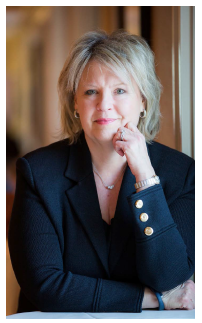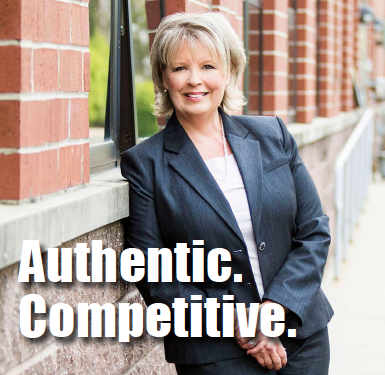 Nancy S. Berg
Nancy S. Berg
Title: CEO and Executive Director
Company: ISPOR
Industry Awards: PharmaVOICE 100, 2016, 2017, 2018; PM360 Elite 100 award for transformational leadership, 2016); multiple Stevie awards recognizing women in business, 2016, 2017, 2018)
Company Awards: ISPOR awards: ASAE Power of A Award for Good Practices for Outcomes Research Reports; multiple awards for ISPOR’s new branding and new website
CEO and executive director of ISPOR Nancy Berg has elevated the professional organization to become the leader in health economics and outcomes research globally.
Under Nancy’s leadership, membership in ISPOR has grown to more than 20,000 individual and chapter members globally. Attendance at the society’s global conferences has also increased with more than 11,000 delegates attending the society’s conferences in 2018. ISPOR’s investment in its mission has also grown with $4.3 million invested in mission-critical initiatives in 2019. Many important initiatives have launched under Nancy’s leadership, such as Health Technology Assessment Central (htacentral.org) to serve as a comprehensive repository of resources and tools, the formation of a new patient council, an update of the society’s corporate branding, and a massive IT project to update and introduce key internal platforms. Among the key updates are a new CRM system, a financial management system, a new website, a new email platform, and other interrelated IT platforms.
Nancy is the public face of ISPOR and since joining the association almost five years ago, she has been instrumental in building relationships with like-minded associations to work together to affect a positive change in the way healthcare is paid for and delivered around the world. But the true mark of Nancy’s leadership is demonstrated in her proven ability to forge collaborative and productive relationships with the board of directors and the diverse mix of ISPOR members, and in her well-developed skills in mentoring staff and  her willingness to give them the independence, yet support needed to manage and implement high-profile projects.
her willingness to give them the independence, yet support needed to manage and implement high-profile projects.
After serving in executive roles at two other nonprofit associations, Nancy shifted her career into healthcare after the experience of her husband being diagnosed, treated, and recovering from a life-changing illness, non-Hodgkin’s lymphoma. This experience has given Nancy a up-close view of the importance of healthcare research and the challenges that patients and caregivers experience.
Her staff sings her praises as a truly amazing leader, bringing together strong leadership skills with a strategic and visionary approach. Importantly, she also is a compassionate leader who truly cares about her staff, ISPOR members, and the broader HEOR and healthcare community.
PV: Can you talk about the evolution of ISPOR since you’ve taken the helm?
Berg: ISPOR was a very successful organization when I took over. But because it had grown organically it didn’t have all the business processes, systems, or the level of applied strategic thinking and planning that was required for the impact it was making. I like to think that I helped it grow up after it had become very successful by helping to articulate and communicate strategy, prioritize, and operate through well-shaped plans. I’ve helped ISPOR establish a voice in government and policy in some important parts of the world and to take more strategic approaches to investing in lower- and middle-income countries. I have also hired some senior people into the organization to work with me on executing our plans.
PV: What were the first initiatives you decided to tackle?
Berg: I began by performing an analysis of the organization, looking closely at the association’s structure, its governance, its market strategy, business plan, and all of the member benefits that we provide. Then I looked at how the organization communicated and to whom. Even then ISPOR was a vast organization. While we had strategies to engage clinicians and patient engagement organizations, for example, these were not always global or strategic approaches. Today, we have well-developed plans for each stakeholder group and geographic market and have developed a communication strategy for the membership as well as for the entire HEOR and extended communities. Additionally, we have strategies focused on developing leaders and talent, change management, and organizational redesign to help us rapidly respond to opportunities.
PV: What are some of the diversity and inclusion goals that are integral to ISPOR?
Berg: Our board of directors consists of 12 people; 50% of those members reside outside North America or Western Europe and more than 50% of our board members are women.
We have established a number of diversity initiatives to engage members from all backgrounds and from all over the world. At ISPOR we also think about diversity in terms of stakeholders — clinicians, researchers, academics, patient engagement organizations, decision makers, payers, and members from industry. We recently developed a diversity model to address segments such as career stage, gender, country of origin, sexual orientation, all of those differences and similarities that make ISPOR and its members interesting. We’re working toward a goal of engaging our entire membership in a more active and visible way and finding a place for everybody.
PV: How would you describe your leadership style and how it inspires others to reach their personal and professional goals?
Berg: I strive to be authentic and operate with great integrity while being visible, talking to people, and being candid and persuasive. I give people stretch goals and convince them they can achieve those goals, whether that’s taking on a big project, increasing our revenue, or significantly growing our membership. I also believe I have an ability to spot talent. I am proud of the fact that I have hired and mentored at least a dozen people who have gone on to be CEOs of other major nonprofit organizations as well as some who have moved on to senior leaders in government or quasi-government organizations.
PV: What has been one of the biggest joys you’ve had since taking over the organization?
Berg: It’s seeing the light bulb go on — that moment when individuals come together and begin to understand and apply new ways of thinking, new approaches to solving problems, or using new processes to move the needle. It is exciting to see younger people turning their academic studies into more practical experience. It’s gratifying to see a group of people from all around the world come together, gel as part of a larger group, and make a real difference.
PV: You are obviously driven to break down the silos between different stakeholder groups, why is this important?
Berg: No one person, company, or organization has all the answers. That’s clear. But if we believe as we were taught that the whole is greater than the sum of its parts then we have to acknowledge that collaborations will deliver a better result. And collaborations are relationships. And often they’re quite difficult, because things such as ego, power, money, might first get in the way. Successful people get beyond those obstacles.
PV: What drew you to the nonprofit world?
Berg: I’ve worked for three major technical and scientific organizations for the last 30 years. I’m all about bringing people together to accomplish a mission or a goal.
One of the reasons I love working in nonprofit organizations is that I like to motivate people and teams to advance goals, to do admirable work in support of important missions, and to have fun doing it.
Nonprofits are complex organizations with all of the same functions and components you would see in a corporation or a company, but the work is often done with smaller teams of people. In working for a nonprofit association, you might have the opportunity to be a part of a marketing department, a finance department, or a cross-functional global team — unique assignments that might not be afforded to you until you’re 20 or 30 years in to your career at a company. A good nonprofit leader must be a generalist. It is rewarding work in collaboration with some really smart and very interesting people, who in many cases are completely unlike you.
PV: What gives you that internal drive to develop the next generation of leaders?
Berg: I have always been motivated to help others succeed. If those around me aren’t stretching then we have weak links, we aren’t applying all the gifts that we’ve been given, and we just aren’t being as successful as we could be. I tell our employees, that our success means their success and that they can, and will, be more successful than they ever imagined possible. It’s always about the group. To me, if you want to be significant you leave a legacy of people, memories, and influence not just “stuff."
PV: What advice do you have for future leaders?
Berg: A leader must continually articulate the organization’s goals. Leaders have to demonstrate their value up the decision chain, which means not only understanding what their boss is trying to accomplish but what the larger goals are. As a leader you have to earn your role and continue doing that every day. You’re going to be watched, challenged, and held to a higher standard than anyone else in the organization. That’s the price of entry. Ultimately, people won’t support you if you aren’t working as hard as they are.
PV: What would you like your legacy to be?
Berg: That I was able to successfully motivate people and teams to achieve admirable work and that I had fun doing it.(PV)


















